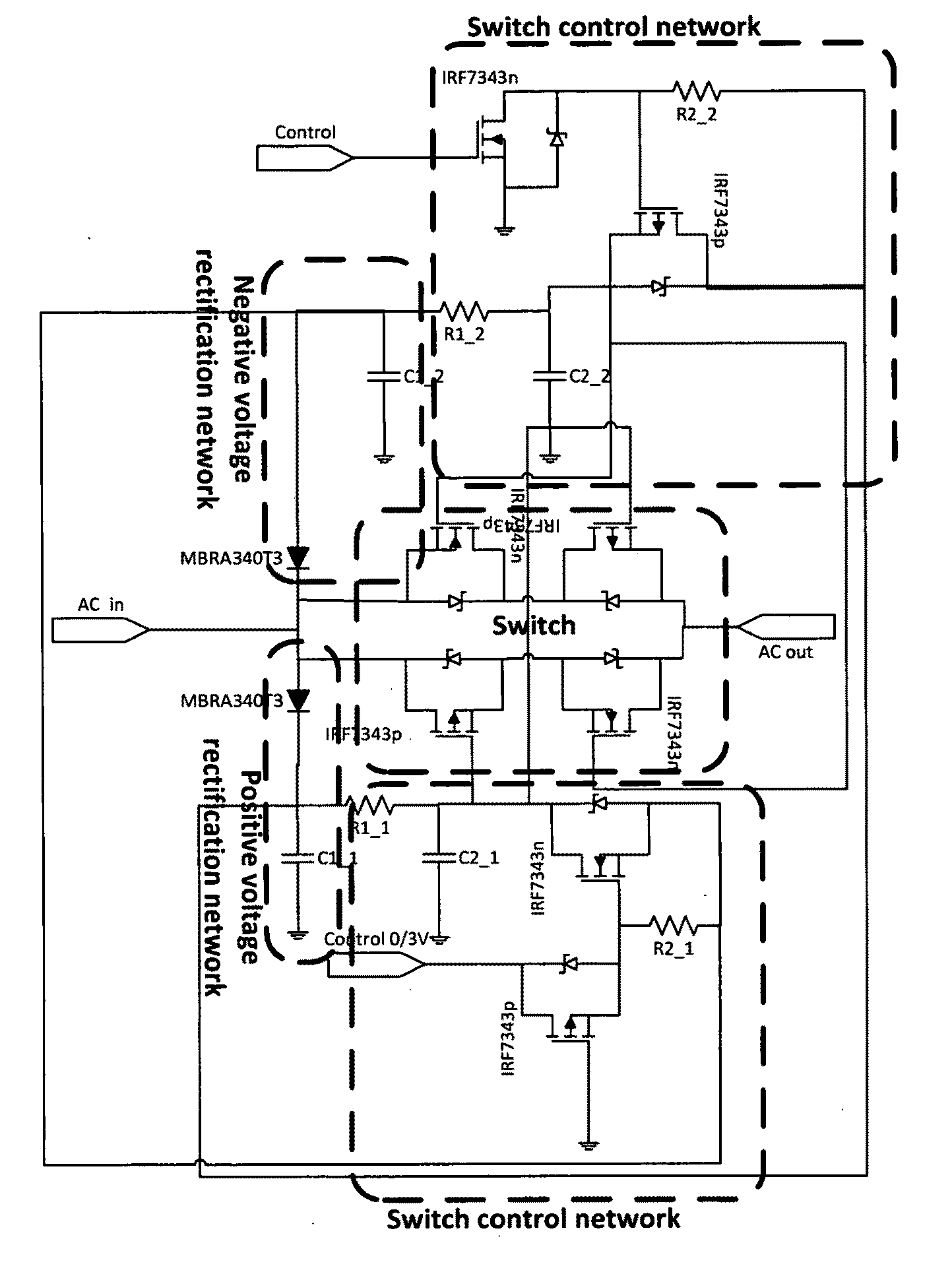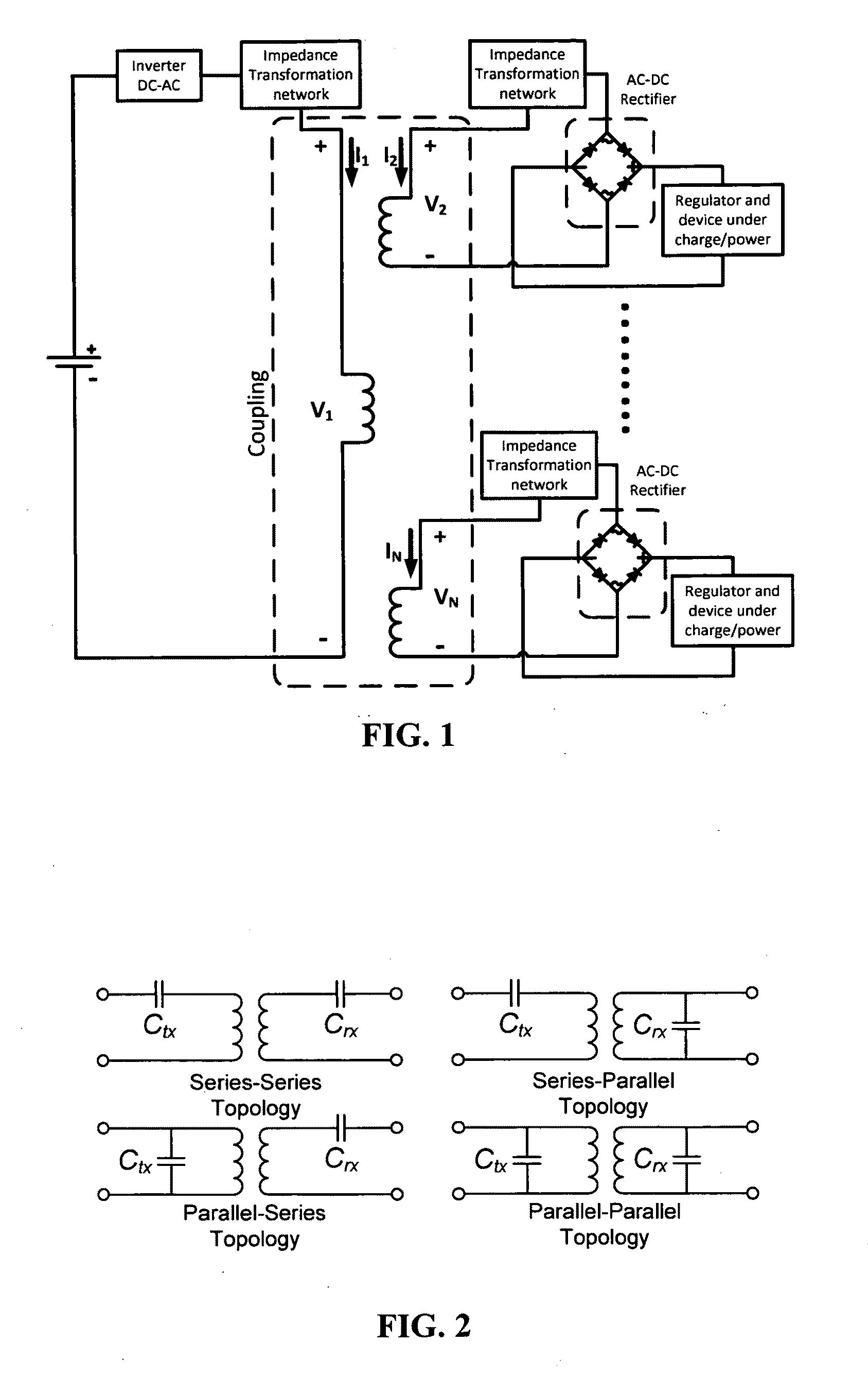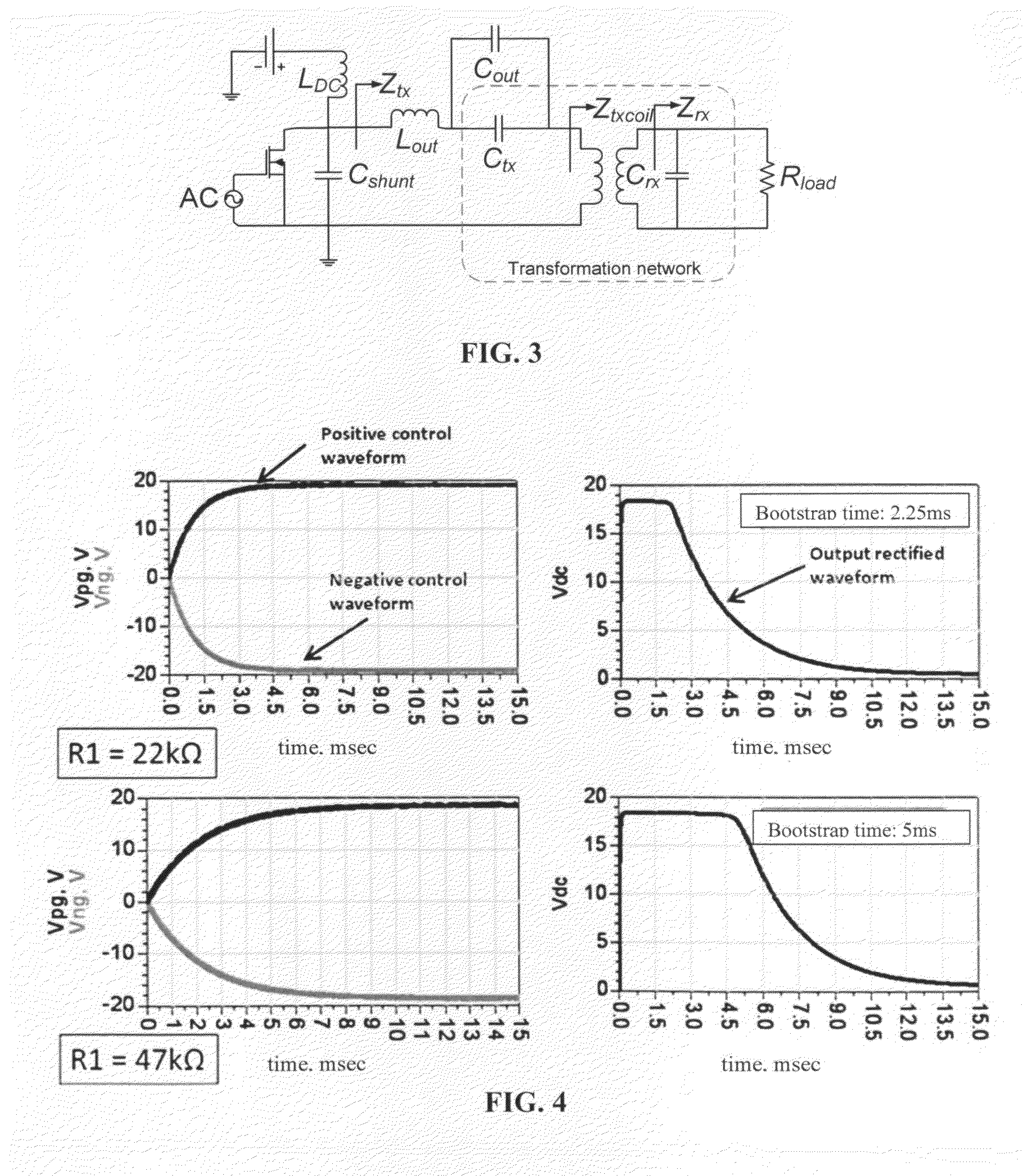Miniature high voltage/current ac switch using low voltage single supply control
a high-voltage/current ac switch and control technology, applied in the direction of power conversion systems, safety/protection circuits, electrical equipment, etc., can solve the problems of only being able to power extremely low-power devices, only extending battery life, and insufficient efficiency and power delivery to fully charge even a typical portable device. , to achieve the effect of preventing any heating issues, improving power delivery to the other receiver or receiver, and high efficiency
- Summary
- Abstract
- Description
- Claims
- Application Information
AI Technical Summary
Benefits of technology
Problems solved by technology
Method used
Image
Examples
example 1
A Class E Transmitter System
[0102]A Class E transmitter system using the IRLR / U3410 HEXFET® power MOSFET rated at 100V breakdown voltage from International Rectifier. A half wave rectifier with a shunt charge holding capacitor of 4.7 μF at the output using MBRA340T3 from ON Semiconductor is used to convert the AC power to DC power. Since the forward voltage drop is 0.45V and the reverse recovery is negligible, power loss due to the voltage drop and reverse recovery is small compared to the amount of power delivered to the load. Load resistance in this section can be assumed to be the equivalent resistance looking into the regulator or device being charged or powered as shown in FIG. 1 instead of the equivalent resistance looking into the rectifier as shown in FIG. 3.
[0103]A Matlab code is written based on the equations derived in [19]-[20] to study the power delivery. Instead of using the calculated value, the value used for the power delivery simulation can be actual values used fo...
PUM
 Login to View More
Login to View More Abstract
Description
Claims
Application Information
 Login to View More
Login to View More - R&D
- Intellectual Property
- Life Sciences
- Materials
- Tech Scout
- Unparalleled Data Quality
- Higher Quality Content
- 60% Fewer Hallucinations
Browse by: Latest US Patents, China's latest patents, Technical Efficacy Thesaurus, Application Domain, Technology Topic, Popular Technical Reports.
© 2025 PatSnap. All rights reserved.Legal|Privacy policy|Modern Slavery Act Transparency Statement|Sitemap|About US| Contact US: help@patsnap.com



